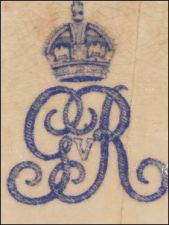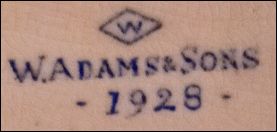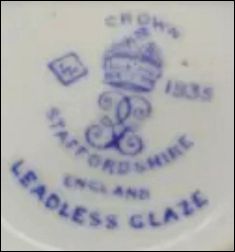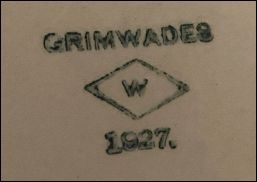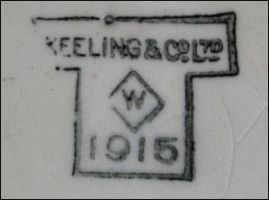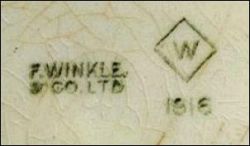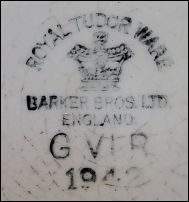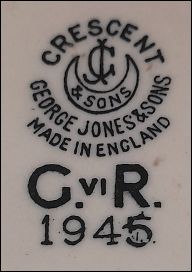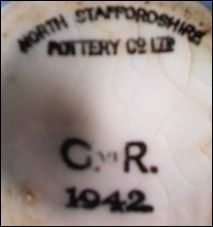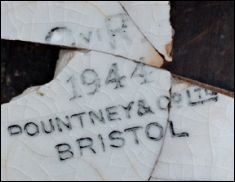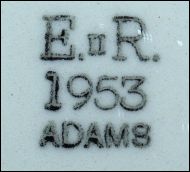 Pottery Index |
index of potters initials |
list of Stoke-on-Trent potters |
potters backstamps |
|
Canteen ware produced for the British Government
and Armed Forces
|
Military mess tins & water bottles for field operation are generally made from metal such as enameled steel and aluminum. Beyond metal kits, pottery ware is used in fixed canteens or mess
halls particularly NAAFI-run service canteens. This ware was purchased by government offices such as the Office of Works (pre 1939) or Minister of Works (post 1940). Such ware was generally marked with the name of the manufacturer, the year produced and the Royal Cypher of the Sovereign at the time. A number of Stoke-on-Trent pottery manufacturers produced such ware. |
- further reading -
Example of canteen ware supply
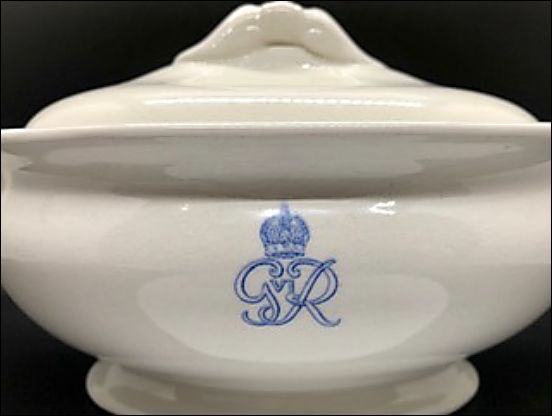 canteen ware - tureen with the Royal Cypher GR VI George VI the King of the United Kingdom |
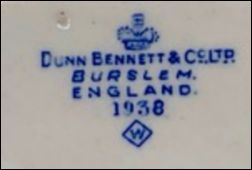 Dunn Bennett & Co Ltd Burslem England 1938 W |
|
The tureen shown was produced for and supplied to the British Government; it was ultimately property of the Crown/Government, hence the GR-VI Cypher. Dunn Bennett (and others) were given government contracts throughout the late 1930s and into the 1940s (WWII) and produced canteen ware - most likely for the armed services. The ‘W’ within the diamond relates to the products being commissioned and produced for the Office of Works (until 1939) and the Minister of Works (post 1940). This mark is there to distinguish the piece from being normal ‘utilitarian’ ware for public sale or belonging to another organisation. |
King George V (1910-36)
King George VI (1936-52)

Section of an engraved copper
plate, used to make the transfer
for the marking for ware produced by Ashworth Bros
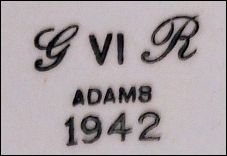
|
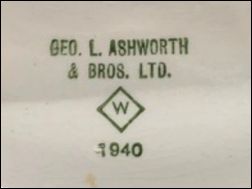
|
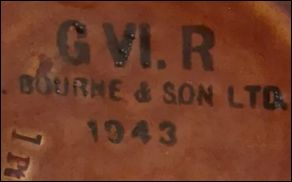
Bourne & Son Ltd |
|
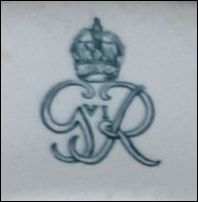 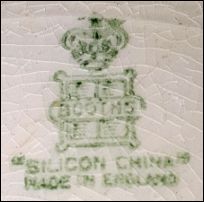
these two marks are on the same
|
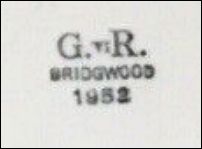
|
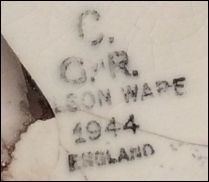
|
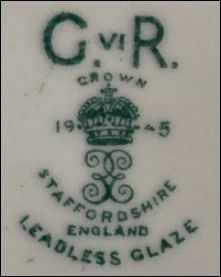
|
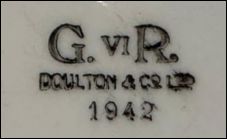
|

|
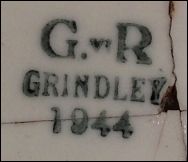
|
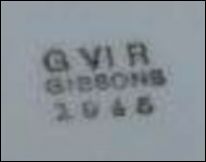
|
|
|
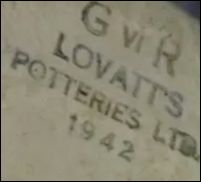
Lovatt's Potteries Ltd
|

|
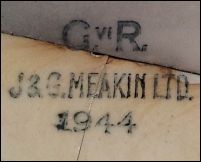
|
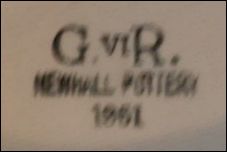
|
|
|
|

Tuscan China
|
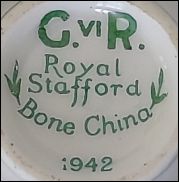
Royal Stafford |
Pountney & Co Ltd
|
|

|
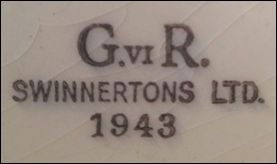
|
||
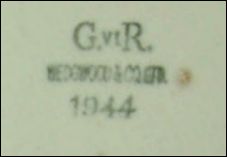
|
|||
Queen Elizabeth II (1952-2022)
mark on white ironstone chamber
pot
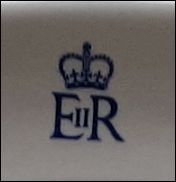 E II R |
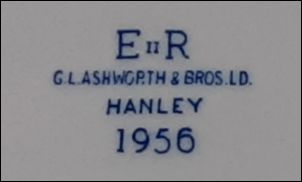 E II R G. L. Ashworth & Bros. LD. 1956 |
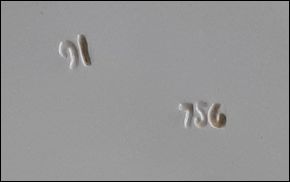 16 756 impressed marks - the '16' is probably a size mark and the 756 will be the month/year of manufacture - in this case July 1956 |
Marks on a large white, ironstone platter produced for the British armed services and canteens (hence the E II R Cypher)
|
|
|
||
Also see: -
Ware supplied under the Wartime Concentration Scheme
Ten Plain Years: The British Pottery Industry 1942-1952
external link:
|
Modernism or Pragmatism. British Utility Ceramics in the 1940s An article by Oliver Kent on a collection of Utility pottery found during building work on the site of the American Red Cross Club in Bristol. Made between 1943 and 1951, these wares were produced under UK Government control primarily for military use. |
Questions, Comments, Contributions? email: Steve Birks
|
Page created 13 February 2024 Last updated 24 November 2025 |
